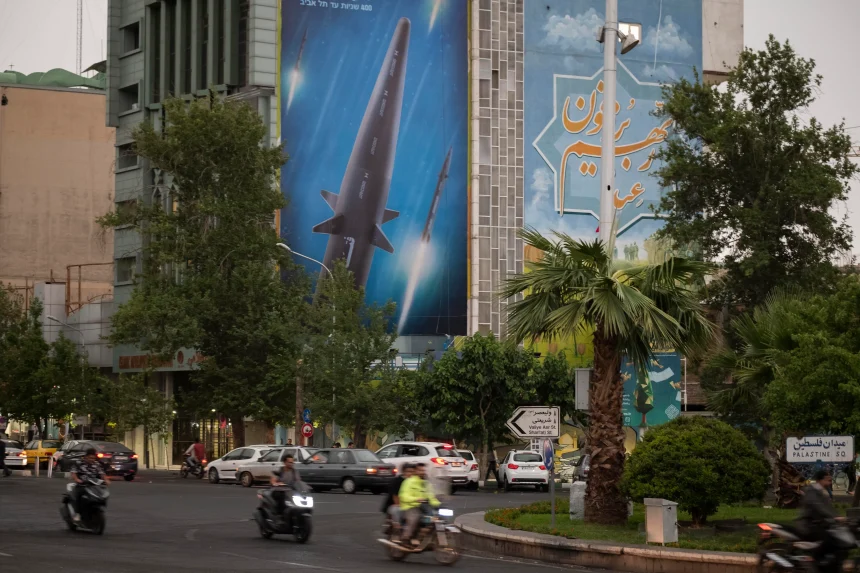The IRGC has begun giving guns to the different parts of Iran’s forces.
Iran has said it will make missiles with artificial intelligence. Officials say the missiles can avoid obstacles and hit their targets with exact accuracy, but experts are still not sure if the weapons can do what they say they can.
Lisa Daftari, an expert on the Middle East and the editor-in-chief of The Foreign Desk, told Fox News Digital, “From time to time, and more often lately, we see the Iran regime show off its military power with a missile test or new technology.”
“We can’t say for sure what this latest missile can do, but I think it would be foolish for the White House not to take Tehran seriously when they say they want to build up their military, increase their presence in the Persian Gulf, and fund terror groups in the region. They also want to keep working on their nuclear weapons program.”
Iran’s defense ministry showed off the new Abu Mahdi rocket after the deputy leader of an Iraqi group of Shia rebels backed by Tehran, Iranian Defense Minister Brig. Gen. Mohammad-Reza Ashtiani said that AI guided the weapon.
Ashtiani said, “When we start making a lot of Abu Mahdi missiles, we’ll be able to shoot at the enemy’s ships, frigates, and destroyers as they move in the sea from the deepest parts of the Iranian soil and completely hidden places at the fastest speed possible and completely destroy them.”
Iranian Press TV said that Islamic Revolutionary Guard Corp Navy Rear-Admiral Alireza Tangsiri noted the rocket would better protect the country’s coast because it had a more extended range and accuracy.
“The Abu Mahdi missile can be fired from deep inside the country. The general said, “The missile has a dual seeker and works well against the enemy’s electronic warfare.”
Al-Monitor said that Iranian leaders said the missile would look like a “ghost” at its targets because it could avoid radar tracking and fly at low altitudes for up to 620 miles.
Daftari asked how Iran could have gotten to this point when it is still under strict sanctions from the West.
“Iran’s government has always been interested in cutting-edge technology, whether it’s been putting more money into its cyber capabilities over the past ten years or now using artificial intelligence in different ways,” Daftari said.
“It’s a reminder that sanctions need to be more carefully targeted and actually enforced so that enemy states can’t get these new technologies,” she said.
Matt McInnis, a senior fellow at the Institute for the Study of War, stated that Iran has been working on these weapons as part of a “long-term effort to increase the range and accuracy of both their cruise and ballistic missiles.”
He thought that Iran said it was making missiles as a reaction to the increased U.S. involvement in the area, which happened after Iran seized oil trucks and other ships.
McInnis warned that it is hard to know exactly what Iran has made and if the weapons can do what they say they can do.
“Based on some of the videos, this looks like a new version of the cruise rockets they already have. So, I think some of the basics about how to improve range and precision are probably right. McInnis said, “But we need to see these in test-fired exercises or some other situation before we can judge them.”
“Iran has a long history of making weapons claims that aren’t true. So, until you see something work, you should take everything with a grain of salt.”
Behnam Ben Taleblu, a senior fellow at the Foundation for Defense of Democracies, says that if the weapon turns out to be as powerful as it was said to be, it would make the Iranian military more dangerous.
“This is more proof that Iran’s most important military systems have spread from the IRGC Air Force to other important parts of Iran’s military, especially the IRGC,” Taleblu said. “You’ve seen this with shorter rockets and drones, and now you’re seeing it with cruise missiles.
“The government has talked about increasing the range of some of its more limited cruise missile systems, and it is said that this weapon, which was once said to be directed by electro-optics, can now be controlled by artificial intelligence.
“That’s probably a bit of exaggeration on the part of the Iranians, but they are getting better at both precision and range.”















